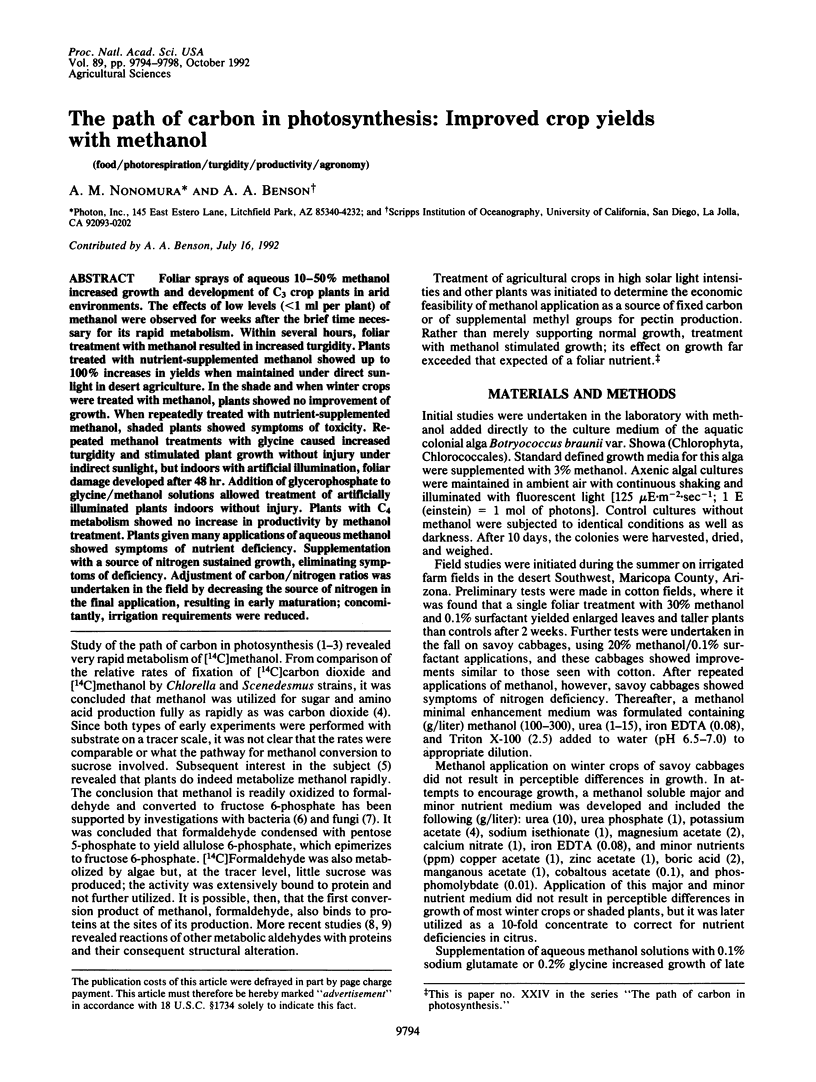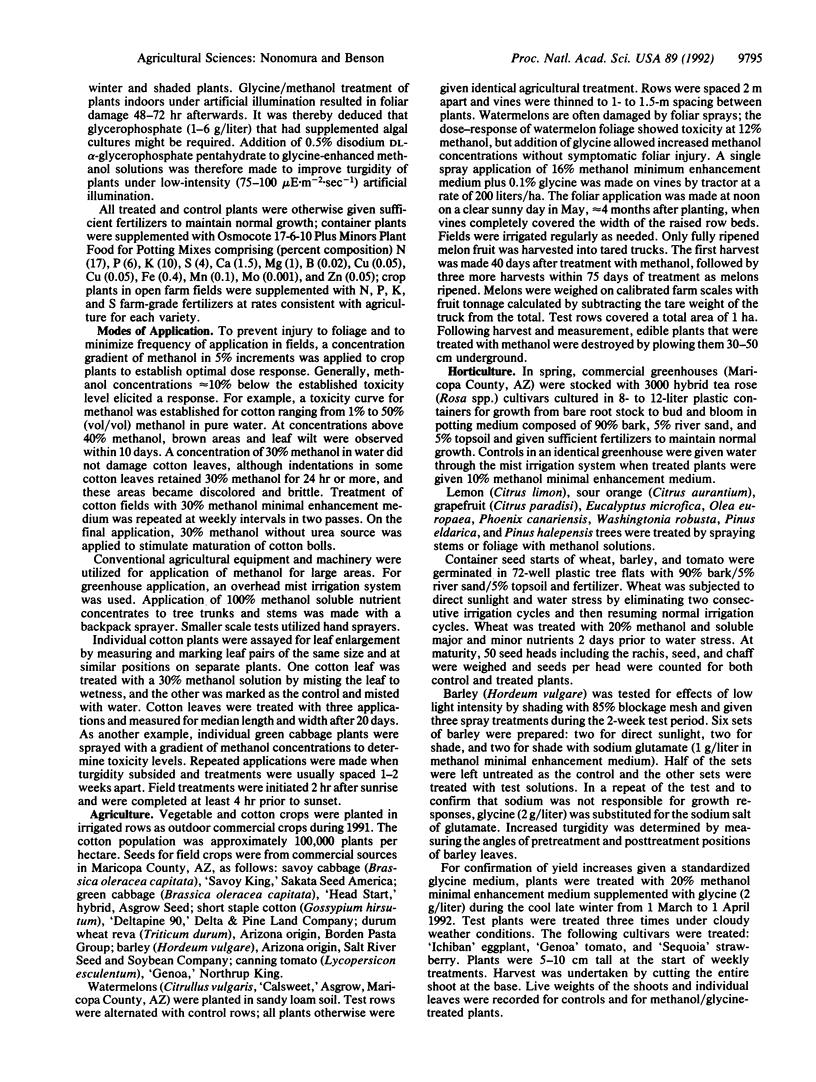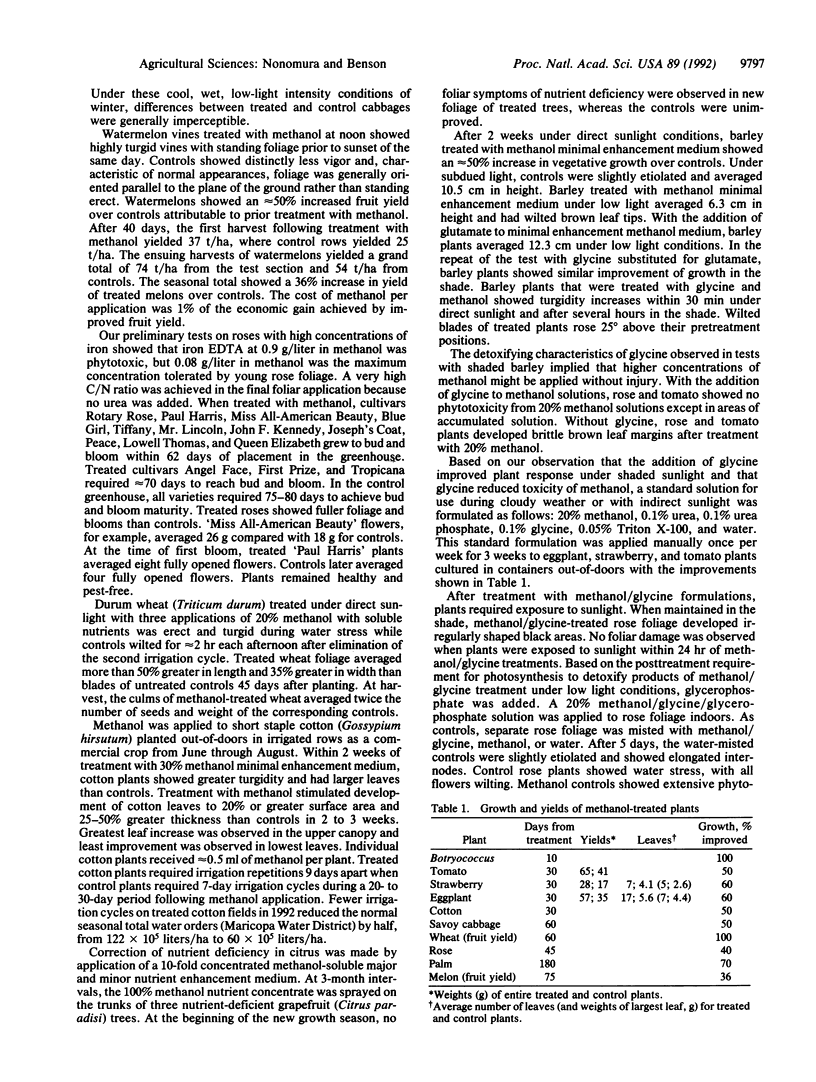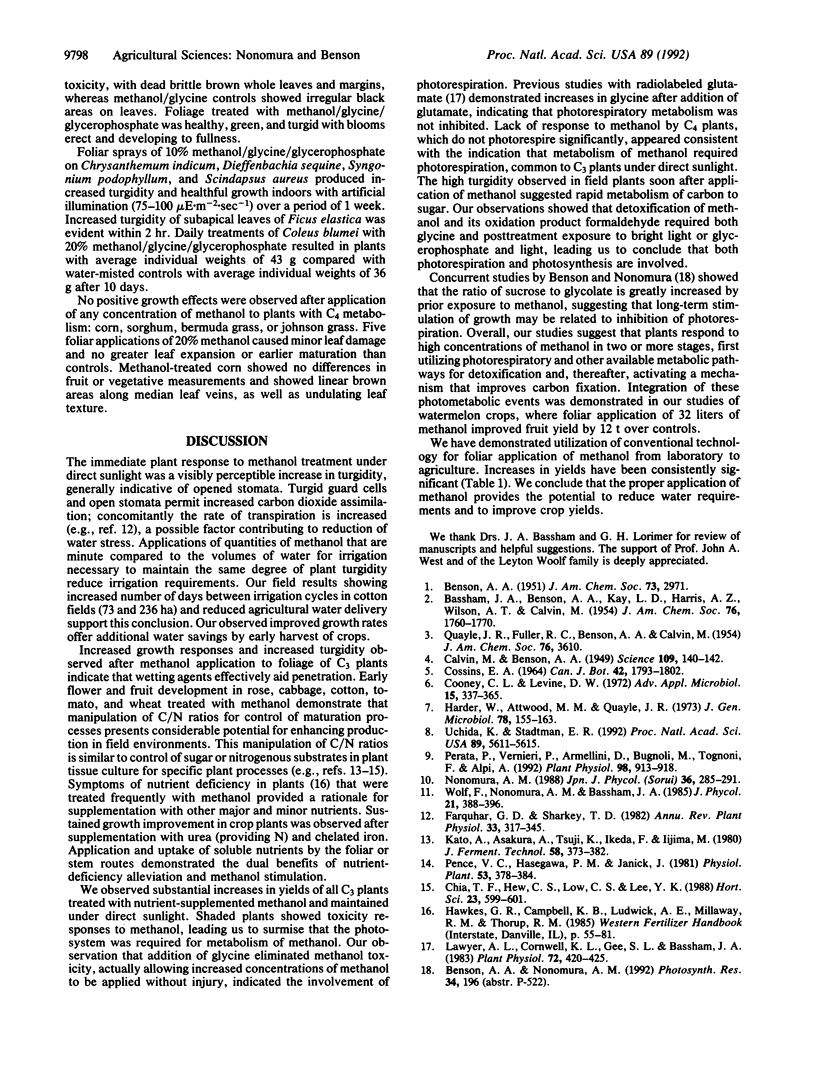Abstract
Foliar sprays of aqueous 10-50% methanol increased growth and development of C3 crop plants in arid environments. The effects of low levels (< 1 ml per plant) of methanol were observed for weeks after the brief time necessary for its rapid metabolism. Within several hours, foliar treatment with methanol resulted in increased turgidity. Plants treated with nutrient-supplemented methanol showed up to 100% increases in yields when maintained under direct sunlight in desert agriculture. In the shade and when winter crops were treated with methanol, plants showed no improvement of growth. When repeatedly treated with nutrient-supplemented methanol, shaded plants showed symptoms of toxicity. Repeated methanol treatments with glycine caused increased turgidity and stimulated plant growth without injury under indirect sunlight, but indoors with artificial illumination, foliar damage developed after 48 hr. Addition of glycerophosphate to glycine/methanol solutions allowed treatment of artificially illuminated plants indoors without injury. Plants with C4 metabolism showed no increase in productivity by methanol treatment. Plants given many applications of aqueous methanol showed symptoms of nutrient deficiency. Supplementation with a source of nitrogen sustained growth, eliminating symptoms of deficiency. Adjustment of carbon/nitrogen ratios was undertaken in the field by decreasing the source of nitrogen in the final application, resulting in early maturation; concomitantly, irrigation requirements were reduced.
Full text
PDF




Selected References
These references are in PubMed. This may not be the complete list of references from this article.
- Calvin M., Benson A. A. The Path of Carbon in Photosynthesis IV: The Identity and Sequence of the Intermediates in Sucrose Synthesis. Science. 1949 Feb 11;109(2824):140–142. doi: 10.1126/science.109.2824.140. [DOI] [PubMed] [Google Scholar]
- Cooney C. L., Levine D. W. Microbial utilization of methanol. Adv Appl Microbiol. 1972;15:337–365. doi: 10.1016/s0065-2164(08)70096-0. [DOI] [PubMed] [Google Scholar]
- Lawyer A. L., Cornwell K. L., Gee S. L., Bassham J. A. Glyoxylate and glutamate effects on photosynthetic carbon metabolism in isolated chloroplasts and mesophyll cells of spinach. Plant Physiol. 1983 Jun;72(2):420–425. doi: 10.1104/pp.72.2.420. [DOI] [PMC free article] [PubMed] [Google Scholar]
- Perata P., Vernieri P., Armellini D., Bugnoli M., Tognoni F., Alpi A. Immunological detection of acetaldehyde-protein adducts in ethanol-treated carrot cells. Plant Physiol. 1992 Mar;98(3):913–918. doi: 10.1104/pp.98.3.913. [DOI] [PMC free article] [PubMed] [Google Scholar]
- Uchida K., Stadtman E. R. Selective cleavage of thioether linkage in proteins modified with 4-hydroxynonenal. Proc Natl Acad Sci U S A. 1992 Jun 15;89(12):5611–5615. doi: 10.1073/pnas.89.12.5611. [DOI] [PMC free article] [PubMed] [Google Scholar]


